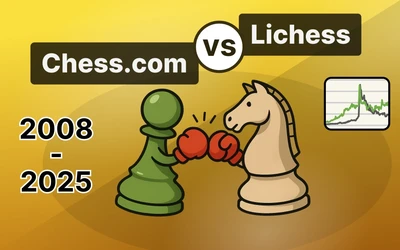
Beating Leela Knight Odds With A Gambit By Paul Morphy
How I Outsmarted AI Using A 250 Year Old Gambit Line"All is well that's well forgotten."
A few weeks ago, I wrote about my journey to beat Leela Knight Odds with Black. That was against the engine Leela Chess Zero without a knight on g1. After beating the monster, I swore to never play it again. But chess players are rarely immune to breaking their vows when it comes to quiting chess, and so it is for me. After all, there was still one final challenge left: trying to beat Leela without a knight on b1, instead of g1. Would it be more difficult?
One of the interesting things about Leela Knight Odds (as opposed to Leela Queen Odds and Leela Rook Odds), is it that it doesn't avoid "regular" opening theory. This works well for the machine in openings where the position can remain closed, i.e. almost everything after 1.d4, 1.c4 or other flank openings. Without a knight on b1, it even plays 1.b4 quite successfully. But in sharp, theoretical opening lines in the Open Games, where the position opens up quickly, this strategy is actually rather risky. It offers chances of beating the engine to anyone with enough patience to figure out, by trial and error, how to obtain a decisive theoretical edge.
In my earlier adventures against Leela Knight Odds, described in the previous blog post, I found that it worked best for me to try and fight against 1.e4, going for sharp 1...e5 lines. There, my knowledge of old-fashioned gambits would probably pay off in the end. In the latest setup, Leela seemed to play the move 1.e4 even less often than without a knight on g1, so patience was again my greatest friend.
I looked for positions I knew from back in the days when I studied al these old-fashioned gambits. This time round, I tried to beat the bot using an opening already analysed by the great Philidor in the middle of the 18th Century. This variation arises after the moves 1.e4 e5 2.Nf3 d6 3.d4 f5!? and is commonly known as the Philidor Countergambit.

Francois-Andre Danican Philidor (1726-1795)
In 2020, I wrote an article for New in Chess Yearbook about this fascinating (and historically important) opening line. When White has all pieces still on the board, it has a very bad reputation indeed. I've heard it being referred to a the "Ugly Duckling of Chess Openings". Almost everyone who's ever written about the Philidor Countergambit, only said bad things about it. Steinitz, Euwe and Kasparov, just to name a few...
It wasn't just that I knew a lot about this line already. I also figured that without a knight on b1, there might be some chances of launching a successful counter-attack, which was beyond Leela's horizon, using Black's massive pawn centre. Wouldn't that be the perfect tribute to the great Fenchman who said pawns are the soul of chess?
To my surprise, Leela chose the ancient, tactically richest option (4.dxe5). In this variation, Paul Morphy had once invented a creative rook sacrifice to obtain active play against the white king. He had probably prepared it in anticipation of a match (which, sadly, never took place) against Howard Staunton in 1858. Now, it was my turn to try my luck... and sure enough,the engine went for the crazy stuff! I knew I 'd found my 'pet line' to try and overcome this final challenge.

Position after Morphy's rook sacrifice 6...Bc5!?
As usual, it took me multiple attempts to achieve the desired set-up, and I failed miserably on the first few tries. Just like last time, it proved particularly hard to convert a winning advantage in the endgame. Even a rook ending with three (!) passed pawns up, took me dozens of moves to win. (Welcome to playing against an engine.) With shaking hands, fearing an unexpected stalemate, I executed the final moves. But a win is a win.
Here's the game with some analysis of the opening phase and the middlegame:
LeelaKnightOdds vs ArnieChipmunk
I managed to beat a modern engine using an antiquated line with one of the the worst reputations of all chess openings. Think about it. Perhaps there's still something to be learned from the old masters - even for neural networks.
You may also like
 MEGALODON777hs
MEGALODON777hsA Resource of World Champions
All the World Championship games in one place ChessMonitor_Stats
ChessMonitor_StatsWhere do Grandmasters play Chess? - Lichess vs. Chess.com
This is the first large-scale analysis of Grandmaster activity across Chess.com and Lichess from 200… CM HGabor
CM HGaborHow titled players lie to you
This post is a word of warning for the average club player. As the chess world is becoming increasin… GM RealDavidNavara
GM RealDavidNavaraBecause we care
After a year I decided to write about what happened with my complaint concerning GM Kramnik’s statis… Lichess
LichessEnding the Boycott
Lichess has resumed cooperation with Saint Louis Chess Club after positive changes, but will maintai… CM ArnieChipmunk
CM ArnieChipmunk